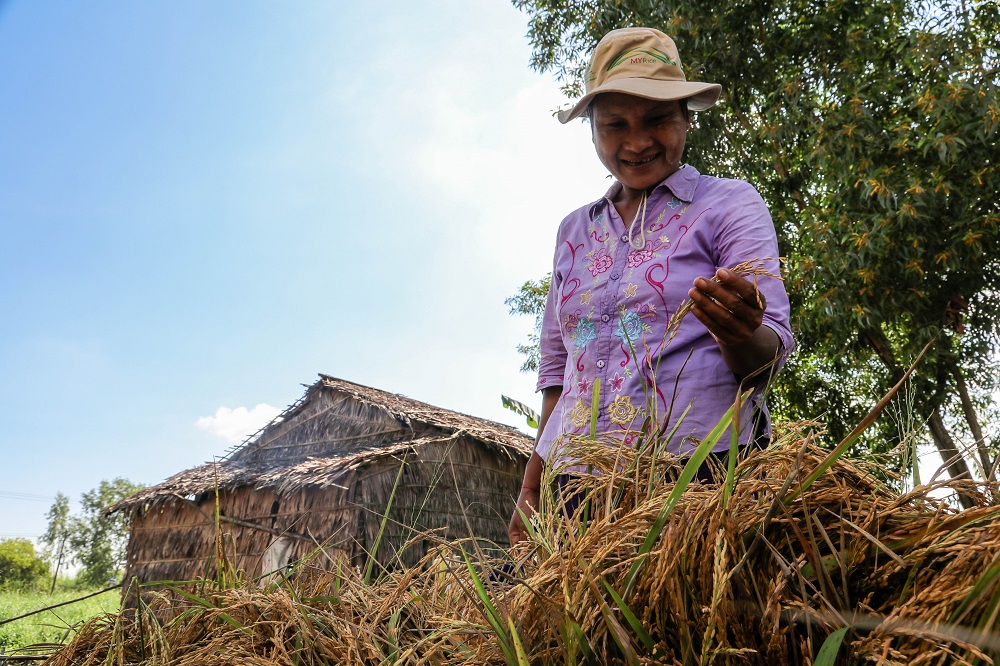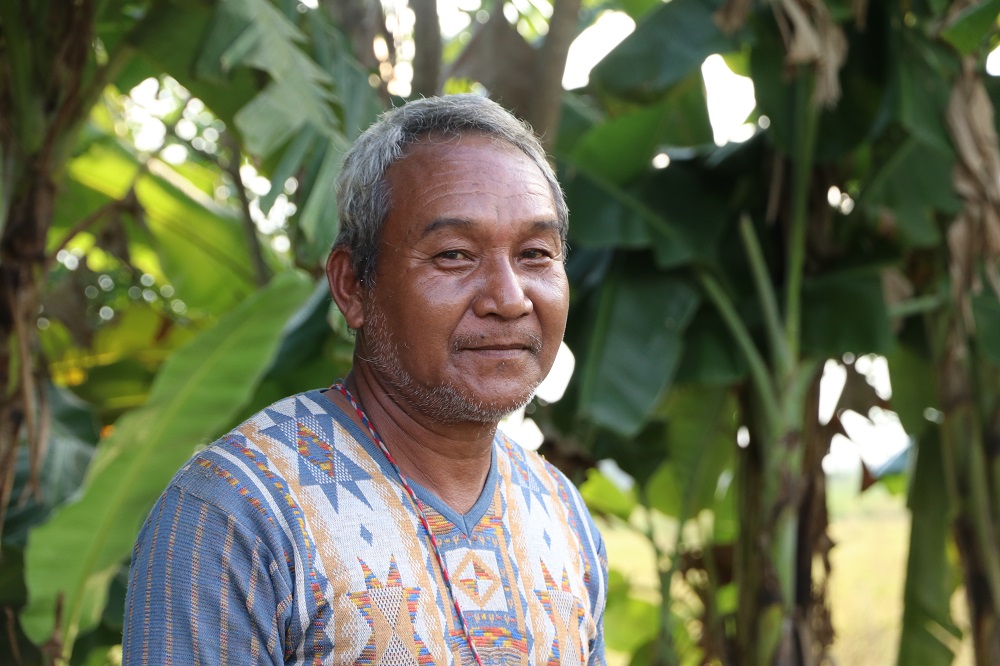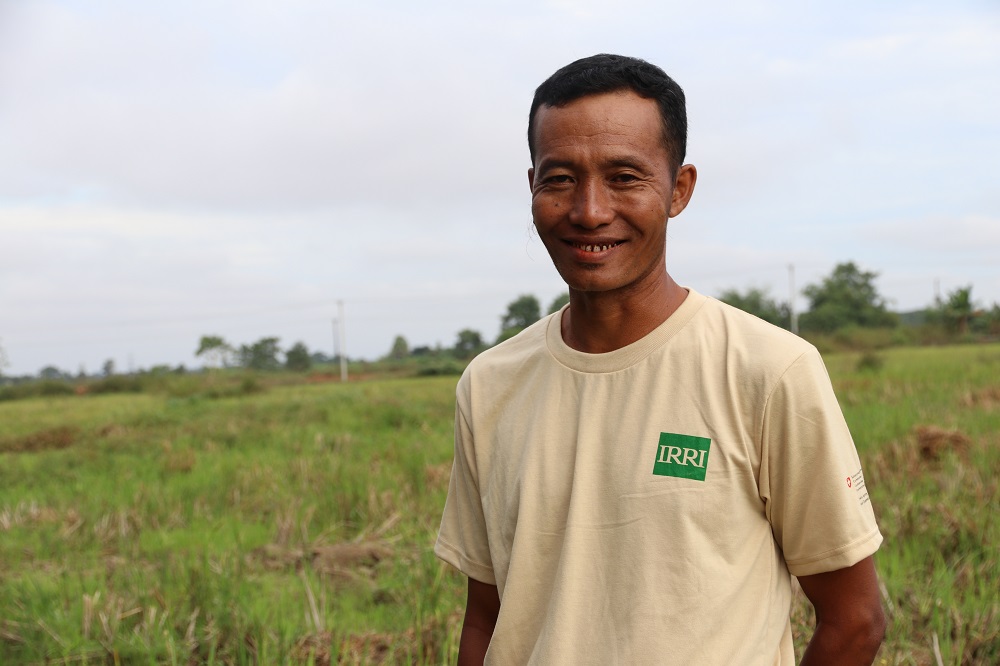The rice industry stakeholders in Myanmar continue to develop solutions for sustaining agricultural development, and the continuous support of IRRI and its experts will play a vital role in the development of the country’s rice sector.

Rice is life in Myanmar, where 70% of its rural population engages in rice farming for their livelihood. Building on this strength, the government is set to regain its past position as a major global rice exporter. To achieve this goal, scientists at the International Rice Research Institute (IRRI) and farmers in the Ayeyarwady Delta have been working together since 2013 to improve the country’s rice production by introducing an array of IRRI-recommended best management practices.
Working closely with the Department of Agriculture, IRRI introduced better crop establishment techniques; improved management of fertilizer, water, and pests; new postharvest technologies; and modern rice varieties. Learning Alliances were also started to foster linkages among the private sector, government, and farmers’ groups to develop viable business models based on upgraded pre- and postharvest production practices.
Understanding how change happens
Best management practices were introduced to Myanmar through the projects Closing rice yield gaps with reduced environmental footprint (CORIGAP) and Diversification and Intensification of Rice-based Cropping Systems in Lower Myanmar (MyRice). These two projects, funded by the Swiss Agency for Development and Cooperation and the Australian Centre for International Agricultural Research, respectively, target the sustainability and optimal productivity of the country’s “rice granaries” in the Ayeyarwady.
“We want to identify the key outcomes and understand the changes that happened in the villages where the best management practices were introduced,” said Grant Singleton, a scientist at IRRI and coordinator of the two projects. “It is important for us at IRRI to understand how we can work together with our national partners to enable smallholder rice farmers and their families to observe, test, and embrace science-based solutions that lead to improved livelihoods from increased yields and improved production efficiency.”
To better comprehend the gains from adopting the best management practices, the project team evaluated income-related changes by conducting interviews with farmers who have had a significant change in income (an average of USD100 per hectare). The data were collected using a brief questionnaire using a mobile data collection platform. The survey questionnaire was conducted with 129 farmers, and of the farmers who experienced a significant increase in income.
In a separate activity, 13 women were interviewed in Letpadan Township to investigate how the adoption of best management practices affected their traditional roles and the impact of these changes on smallholder families and their communities.

Technologies for better lives
The farmers identified the best management practices that helped improve their production and led to higher profits and extra household income in the last five years. The practices included balanced nutrient management, ecologically based rodent management, improved varieties, good weed management, and improved postharvest technologies.
Results of the survey revealed that, by using best management practices, farmers earned, on average, an extra income of USD 101.75 per hectare every year. The farmers reported allocating the additional money for food (26%), healthcare (18%), education (14%), socio-cultural activities (32%), and other household items (10%).
Mr. Thein Win reported that his income from his combined monsoon and summer crops in 2017 increased by USD 415 using the best management practices he chose.
“I used improved varieties, including Yaenelo 7, and the drum seeder,” said the father of three who has been farming rice for more than 30 years. “I applied pesticides and fertilizer judiciously. Upon using these techniques, I noticed significant changes such as fewer insect attacks and better seed spacing and aeration. I also used a lower seed rate. Because of these, I could say we now have extra money to invest in our children’s education. Our standard of living has improved from five years ago.”
Moreover, his family was able to buy more household items and agricultural equipment.
The women’s perspective
Aside from reaping the benefits of more profitable farming and a better education for their children, the wives look at the increased income through a different but equally important lens.
“We can buy clothes for the whole family and dolls for my daughter,” said Thin Thin Lai, mother of three young children.
Some also reported improvements in household nutrition as they are now able to eat three meals per day whereas previously they ate only two meals per day.
“In the past, we could not eat sufficiently,” Mrs. Lai added. “Now, we can even buy snacks such as fruits.”
“We can buy more food, such as meat and fish,” Mrs. Ohnmar said. “Unlike before, we can have up to four different types of curries now.”
The families have seen many changes since the best management practices were rolled out. These changes took place on both a personal and community level. The respondents mentioned that the increase in their income enabled them to donate more to build pagodas, an important Buddhist practice. They also put some of the money into the community fund to build more infrastructures, such as roads, which benefits the community.

A full, healthy plate for the world
The rice industry stakeholders in Myanmar continue to develop solutions for sustaining agricultural development, and the continuous support of IRRI and its experts will play a vital role in the development of the country’s rice sector.
“We, as scientists, together with the farmers and other rice industry stakeholders, all want the same thing—improved lives and a full, healthy plate for the world’s households,” Dr. Singleton said. “That is why, for the remaining three years of CORIGAP, we and our national research partners in China, Myanmar, Thailand, Vietnam, Indonesia, and Sri Lanka will ramp up our efforts in working together with farmers and their families to maximize their potential in producing more rice. More importantly, promotion of best management practices will help farmers to be more resilient and climate-smart under various changing climatic conditions.
“We want to ensure that the technologies that work well for them can be used efficiently, effectively, and economically, and that there would be positive environmental outcomes for rural communities and biodiversity,” he added. “Our focus is to provide a new pattern of behavior so that farmers will continue to use these best management practices beyond the life of the project.”
Ms. Quilloy is a communication and outreach specialist at IRRI and the Learning Alliance facilitator of the CORIGAP and MyRice projects. Dr. Connor is CORIGAP’s postdoctoral fellow investigating the adoption of best management practices and the impact on farmers’ lives.





